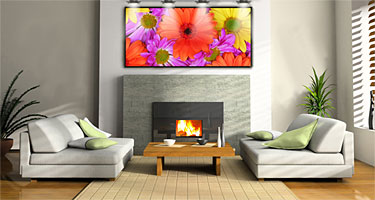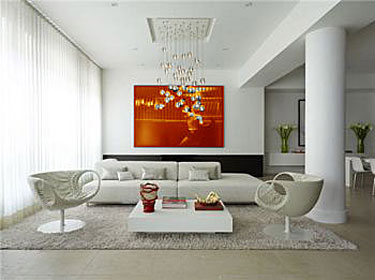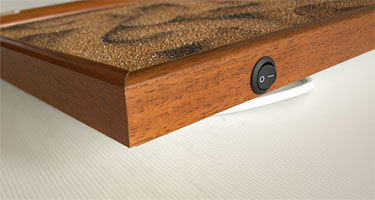
Infra-panels for heating
Infra-panels for heating are intended for a complete non-conventional heating of interior using infra-red rays with many added values.
The source of heat is electric current with the heating of carbon mixture with minimum power consumption, thanks to which healthy, beneficial and energy-saving heat can be achieved.
Infra-red rays drop on the earth, they pass air without heating it. Heat is transferred to persons, walls and objects in the area directly, in practice without any other intermediator - air. Subsequently it is heated from walls and objects in the vicinity.
The advantages of infra-red panel heating vs typical heating:
 1. It is energy budget-wiser
1. It is energy budget-wiser
In the case of a conventional heating, hot air accumulates under the ceiling since it is lighter than the cold air. It stays down next to the floor. Air temperature under the ceiling may be higher by 10°C even, while this hot air cannot be used and inn addition, it may come to its leakage and thus thermal losses.
2. It is suitable for allergy suffering people since it reduces dustiness in a room and does not drain the air
With regards to the fact infra-red radiant heating is not focused on the heating of air but persons, there is no air circulation and no dust distribution in a room. Relative air humidity is not reduced, which is more pleasant for breathing.
3. It helps masonry drying whereby preventing the mould formation
Radiant heat heats a wall. As long as the wall has higher temperature than air in the room, no air humidity is condensed on it, thus you shall prevent not only dewing and possible mould formation, but also assist in brick drying.
4. Simple installation
No cutting or drilling for pipes, as it is the case of radiators, is necessary. Infra-panel must be fixed with 4 dowels to the wall and connected to electric 230 V socket. Infra-panel does not take place as the classical radiator.
5. Aesthetic accessory
Infra-panel is made as a picture, not only it does not disturb in the interior, on contrary, it acts as an aesthetic accessory and makes the pleasant home environment you dreamt of.
6. Prompt start-up after switching on
The entire infra-panel has a low thermal inertia so it can reach the full power after 10-20 minutes after switching on already.
7. Adjustment of thermal conditions individually according to the need in the individual rooms
 8. No electric smog
8. No electric smog
Radiant cell is the ohmic load made on the base of carbon. It is heated to the working temperature by electric current from 230 V mains. Thus it is the minimum source of electric smog when compared to the other electric and electronic devices.
9. Silent
Infra-panel has not electromechanical moving parts, so no media flow occurs. Thus it is absolutely silent.
10. Beneficial effect on an organism
Radiant heat not only heats the skin, it penetrates deeper to tissue similarly as sun rays. The beneficial effects of infra-red radiation on a human organism are proven and infra-red radiation therapy is commonly used in medicine.
11. No products are generated
In the classic sources of infra-red radiation, such as fireplace, stove, etc. it comes to the oxygen burning and the forced air exchange leading to thermal losses. When using infra-panel, there is no oxygen burning, thus it is possible to reduce venting to hygienic minimum.
The disadvantages of heating by radiation
Heating by radiation acts only in the room it is installed in. It is impossible to heat the neighbouring room by opening the door, as it is in the case of common heating, when hot air flows from one room to the other one.
The heated object must be at a sight distance from the panel. As long as there is an obstruction in the way, the thermal rays shall be absorbed or reflected.

 1. It is energy budget-wiser
1. It is energy budget-wiser 8. No electric smog
8. No electric smog